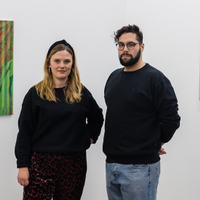
Emily Ebba Reynolds
Curator, Museum Marketing Specialist
Nando Alvarez-Perez
Artist, Photographer, Educator
Nando Alvarez-Perez and Emily Ebba Reynolds are the founders of the Buffalo Institute for Contemporary Art, an art and education project. Through innovative exhibitions, cross-disciplinary skills-based programming, and arts ecology development, BICA aims to break down barriers between the art world and the rest of the world in order to make lives better.
From a conversation with Annie Bielski March 13, 2019
Conversation
On starting an art and education project in a Rust Belt city
Buffalo Institute for Contemporary Art founders Nando Alvarez-Perez and Emily Ebba Reynolds on building their project from scratch, considering the ways that art spectators can actually become art users, and why artists can't ever afford to be selfish.
Buffalo Institute for Contemporary Art founders Nando Alvarez-Perez and Emily Ebba Reynolds on building their project from scratch, considering the ways that art spectators can actually become art users, and why artists can't ever afford to be selfish.
You recently opened a new arts and education project, The Buffalo Institute for Contemporary Art. What’s it going to be?
Emily:
We’ll have exhibitions and our idea is, through the run of them, to really build as many opportunities for diverse and different kinds of engagements. We’re working with artists to come up with programs and workshops and all kinds of skill shares and things that would engage different people from different artistic disciplines; but also from different walks of life, maybe doctors or mechanics. The basic idea is to bring arts into dialogue with more or different kinds of people by meeting people where they are.
For the unfamiliar, Buffalo is seven hours away from New York City, four from Detroit, three from Cleveland, two from Toronto, and thirty minutes from Niagara Falls. You both recently relocated from the Bay Area to Buffalo with the intention of starting this space. How did you decide that this is something you wanted to do? And why Buffalo?
Nando:
We’d been talking for a while about something that we could start in the Bay Area. We were both pretty busy with our work, our jobs, plus Emily’s gallery and me trying to get my own work out there. It was, I think last summer, I was attending Tania Bruguera’s “La Escuela de Arte Util” at Yerba Buena Center for the Arts, where Emily worked. Basically, it was an eight-week workshop and introduction to Tania’s approach to thinking about how art can engage larger audiences and be made very practical and useful for non-artists. It was around that time that we were both feeling a bit burnt out on the grind of being in the Bay Area. There was a feeling that I think we shared, that while the art spaces there do an excellent job of serving themselves and providing opportunities for artists, it was starting to feel like a very inward-looking bubble. We wanted to think about ways that we could turn art more outward, and think about turning art spectators into art users.I think that the reason we landed in Buffalo is because I’ve got roots here. We knew that this project would be public-facing, community-engaged, and we didn’t want to just wander into [a city] where we don’t have personal stakes in our program.
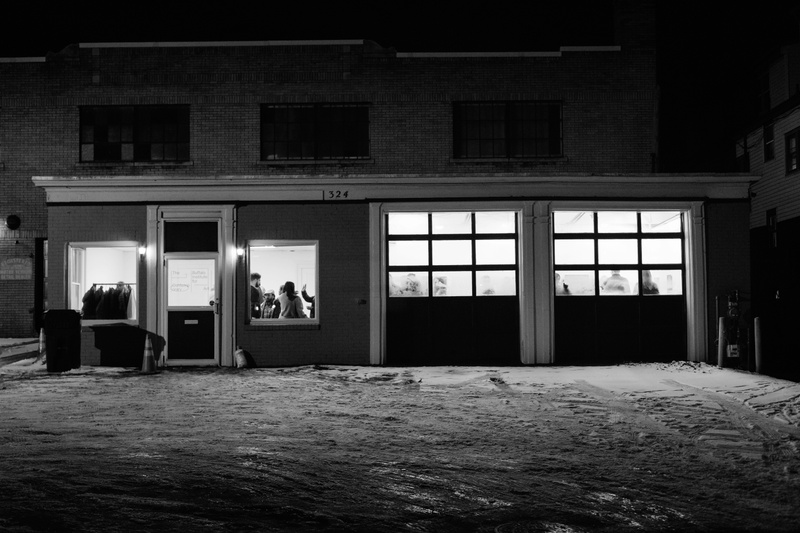
Photo by Jacob Vogan, courtesy the Buffalo Institute for Contemporary Art
Sometimes new art spaces are seen as assets, while other times they’re met with protest, particularly in socio-economically vulnerable communities. How are you addressing this reality?
Emily:
We really spent our first year that we lived here meeting with people and trying to learn as much as we can about not only what other arts organizations and other non-profits and public service organizations are doing in Buffalo, but what neighborhoods are like and how the people who live in different neighborhoods feel about them. We tried to be really conscious about what it would mean to open in various locations and neighborhoods for people who actually live around us.
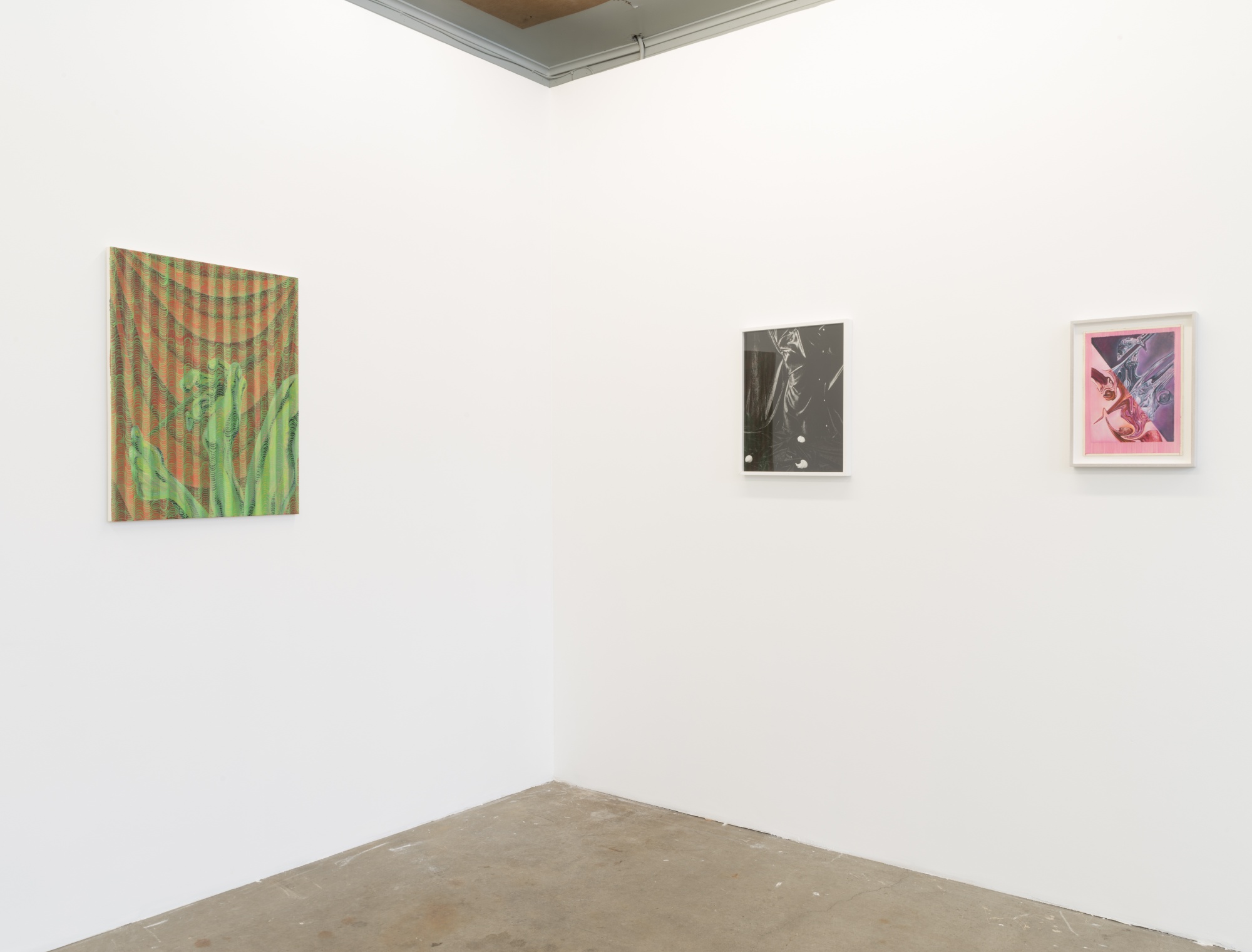
Photos of Body Spray by Nando Alvarez-Perez, courtesy the Buffalo Institute for Contemporary Art.
Nando:
The third show of this year is an artist named Rachel Fein-Smolinski who is a photographer and installation artist, and her work deals with the aesthetics of healthcare and hospitals and what it looks like to be within the medical system. Alongside that, we’re planning lectures with local physicians and things like that.
When I was just about to graduate from art school in Chicago, a lot of the conversations surrounding life after school were about moving to New York or L.A., though of course people did other things, including stay in Chicago, move home, whatever. This was less than 10 years ago but it feels like the conversation has really shifted. You’re investing in Buffalo. How important is place to an artist or art space?
Emily:
For us it started to feel at some point like, “Okay, we’ve really done a lot in the Bay Area, we have really strong connections with people that we believe will last even when we don’t live here anymore.” That was a time that was like, “Okay, we can leave then. We can go to Buffalo.” We have always been watching galleries in remote places that aren’t part of these big urban centers…
Nando:
Like Good Weather in Arkansas.
Emily:
My grad degree is in Exhibition and Museum Studies and I’m a real museum nerd. Some of my favorite art experiences and museum experiences are at the places that are way off the beaten tracks. There’s this place in Germany called the Insel Hombroich and that’s one of my favorite museums out there. Then MASS MoCA of course, where you use engagements that really ask people to come a long way and then spend some time. I think those are really interesting. Buffalo isn’t quite like that. Obviously, it’s still a city, it still serves the population. I think we’re really interested in exploring how people might start to come to cities just to visit art experiences, and that kind of thing.
Nando:
A lot of what we were feeling last year was that there was, in these larger cities, there is a feeling in excess that the institutions are not really there to help you or save you, or help artists get their work out there. They all kind of want to engage in this larger global art world that you find on Instagram and in New York and most obviously at fairs. A lot of what we were thinking about was just pluralizing “art world” into art worlds and giving credence to the fact that you don’t necessarily have to be in one of these major cities to still engage with the larger art world.
What advice do you have for young artists who are trying to sustain themselves, their work, and a sense of community outside of school?
Emily:
Don’t despair, stay positive, and think about what you can do yourself. Right after grad school, three friends and I were feeling a little desperate in different ways and worried about how we were going to keep our practices going when we didn’t have institutional support anymore. We took a leap and started a gallery ourselves and it was scary but it was manageable. We did it. That kind of thing of just not letting it get to this point where you’re like, “Oh my gosh, I’ll never be able to!” Sometimes you just have to do it yourself. It might be a passion project on the side, but that really helps build community. The other thing I would say is, you can’t be selfish. Going to other people’s openings is just as important as being at your own opening. Doing whatever you need to do to support other artists who you respect and who you value is essential.
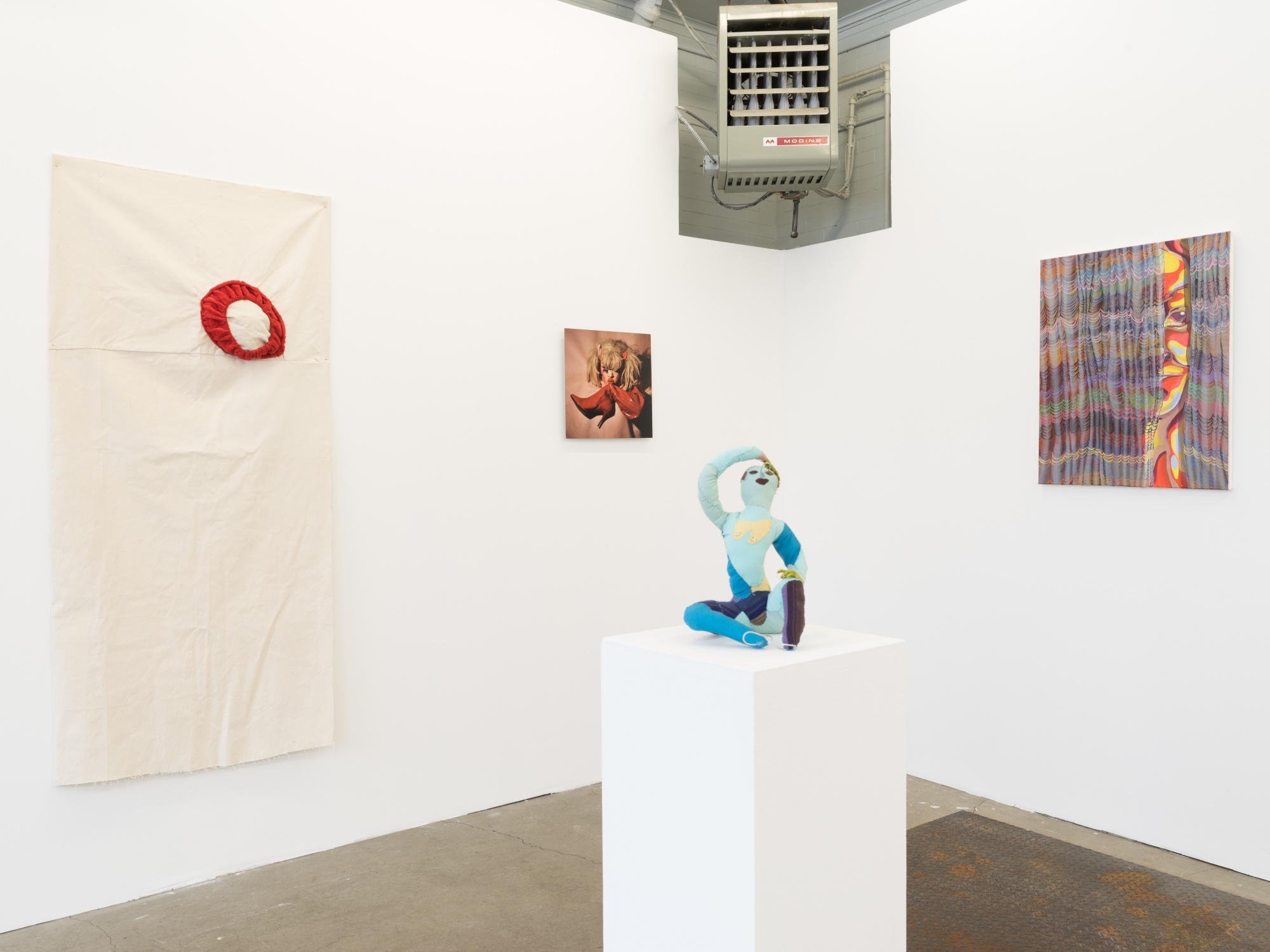
Photos of Body Spray by Nando Alvarez-Perez, courtesy the Buffalo Institute for Contemporary Art.
Is it true that you will do a studio visit with anyone who asks?
Emily:
Yeah, at least as long as they’re within reasonable driving distance. That’s something that actually started with the gallery that I worked at in San Francisco. It was the easiest way to get to know a lot of people really fast. Just doing a studio visit doesn’t mean that you’re doing a show necessarily, but it’s just a really great time to get to know a person and talk about what they’re doing.
For the kind of work that you guys do, what are the most valuable resources?
Emily:
Money. Space. Those are always the two easy ones.
Nando:
Time.
How do you manage your schedule with so many projects happening at once, and how do you avoid burnout?
Nando:
Google calendar, and then you get burnt out and work through it.
Emily:
We say no to things, which is something you have to learn to do. Some things just don’t make sense to do. That’s basically it. It helps to be with each other. We are together a lot and also, for managing burn out, I think we really do try to make sure that we’re traveling a lot and that we’re seeing art outside of Buffalo pretty frequently. When we moved here we mandated that twice a year we’d go back to L.A and San Francisco. We’re trying to make sure we keep those connections there. I honestly think studio visits really help us avoid burnout, because talking to people and getting other people’s perspectives always is a good check in.
Has there been a lesson you’ve learned along the way—either as it relates to this project or your individual pursuits—that you wish someone would have told you when you were younger?
Emily:
Learning to do things for yourself instead of complaining about things is really an incredible way to get past any sort of speed bump. If you ask for something and someone says no or they’re not giving it you quickly enough, find out if there’s a way you can just get it for yourself.
Nando:
If you want [your work] out there, you need to find out who deals in the work that you do and the milieu that you want to be a part of, and then you need to go and make it happen. Also, I was definitely told this plenty of times, but be patient, don’t rush. Obviously in any artist’s career, you so badly don’t want to say “no” because there’s this fear that it might be your last opportunity. “If you’re not seen there, nothing else will happen.” But, you need to be patient, just keep working on the work.
With BICA too, we thought when we moved here last December that we would kind of be open and making things happen by March or April which, in hindsight, is insane! Having taken our time over this past year and made connections, met people, and really learned the lay of the land in terms of what Buffalo has and what it might need has paid off immensely. Just take your time; it’s not a sprint, it’s a marathon.
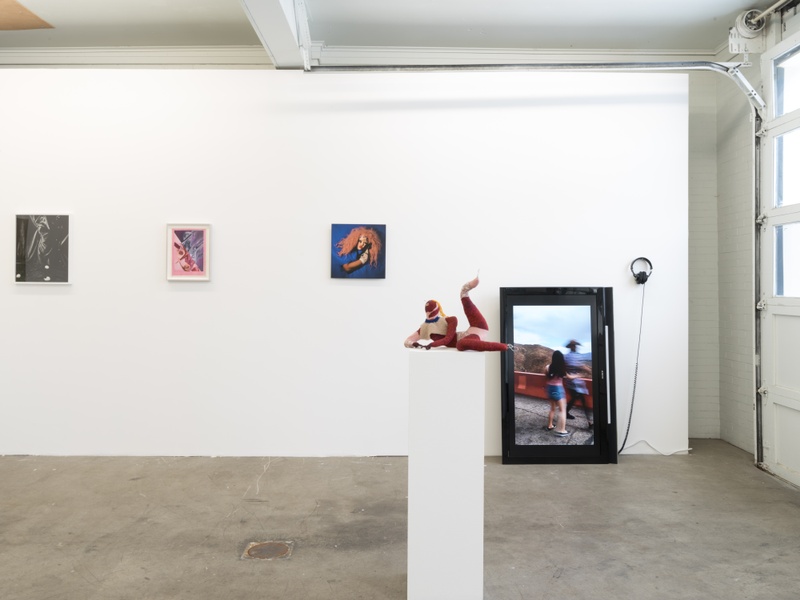
Photos of Body Spray by Nando Alvarez-Perez, courtesy the Buffalo Institute for Contemporary Art.
Some Things
Emily Ebba Reynolds and Nando Alvarez-Perez recommend:
- An Extended Lecture on Tree Twigs: Toward an Ecology of Aesthetics by Alistair Hudson
- Skulptur Projekte 2027
- Medium wings at Gabriel’s Gate in Buffalo
- Toki highballs
- Sheet pan dinners